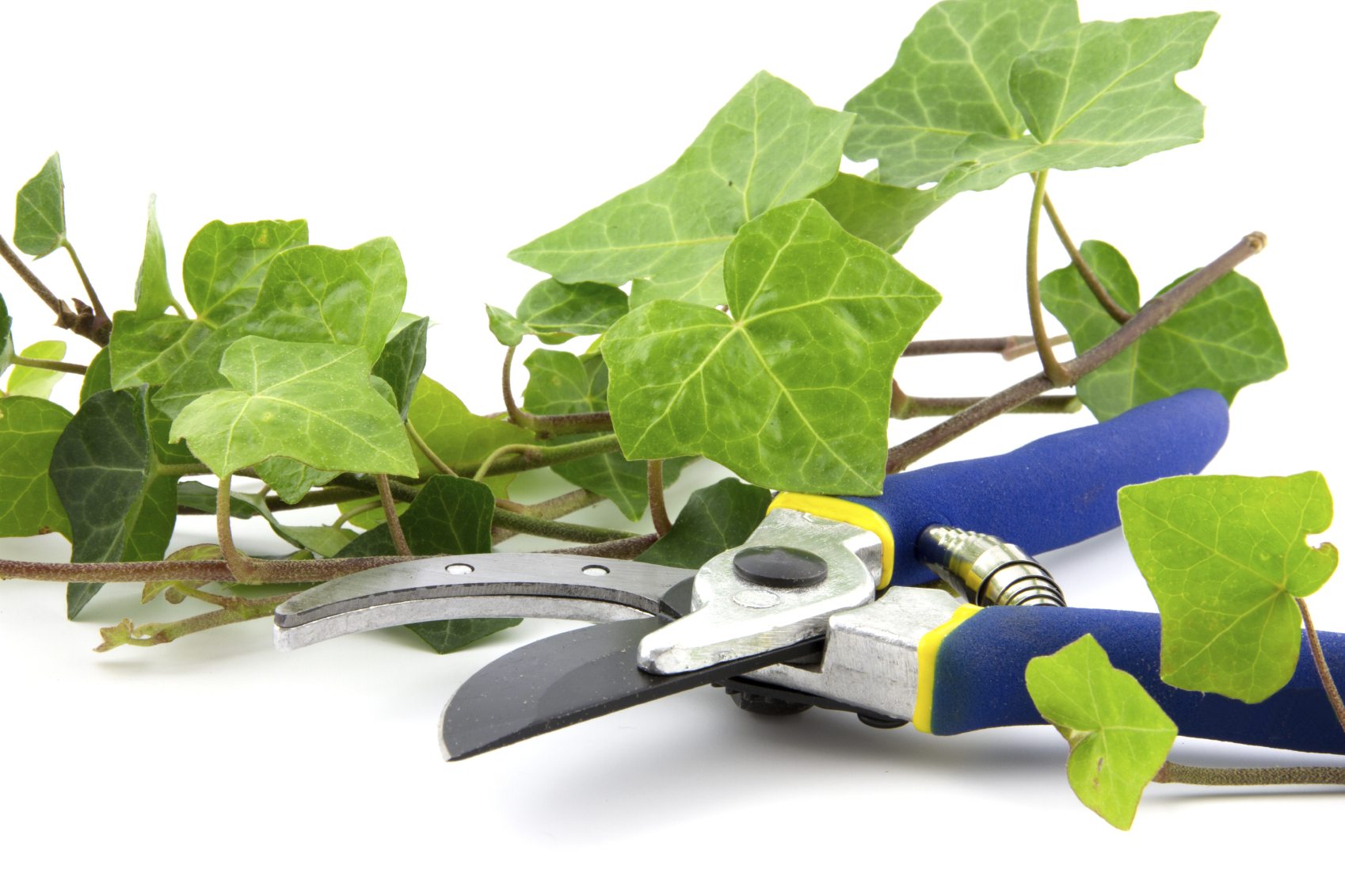English Ivy Pruning: Tips On How And When To Trim Ivy Plants


English ivy (Hedera helix) is a vigorous, widely grown plant appreciated for its glossy, palmate leaves. English ivy is extremely hale and hearty, tolerating severe winters as far north as USDA zone 9. However, this versatile vine is just as happy when grown as a houseplant. Whether English ivy is grown indoors or out, this fast-growing plant benefits from an occasional trim to stimulate new growth, improve air circulation, and keep the vine within boundaries and looking its best. Trimming also creates a full, healthy-looking plant. Read on to learn more about pruning English ivy.
When to Trim Ivy Plants Outdoors
If you’re growing English ivy as a ground cover, ivy plant trimming is best done before new growth appears in spring. Set your mower on the highest cutting height to prevent scalping the plant. You can also prune English ivy with hedge shears, especially if the ground is rocky. English ivy pruning depends on growth and may need to be done every other year, or as often as every year. Use clippers or a weed trimmer to trim along sidewalks or borders as often as needed. Similarly, if your English ivy vine is trained to a trellis or another support, use clippers to prune out unwanted growth.
Ivy Plant Trimming Indoors
Pruning English ivy indoors prevents the plant from becoming long and leggy. Simply pinch or snap the vine with your fingers just above a leaf, or prune the plant with clippers or scissors. Although you can discard the cuttings, you can also use them to propagate a new plant. Just stick the cuttings in a vase of water, then set the vase in a sunny window. When roots are about ½ to 1 inch (1-2.5 cm.) long, plant the new English ivy in a pot filled with well-drained potting mix.
Sign up for the Gardening Know How newsletter today and receive a free copy of our e-book "How to Grow Delicious Tomatoes".

A Credentialed Garden Writer, Mary H. Dyer was with Gardening Know How in the very beginning, publishing articles as early as 2007.